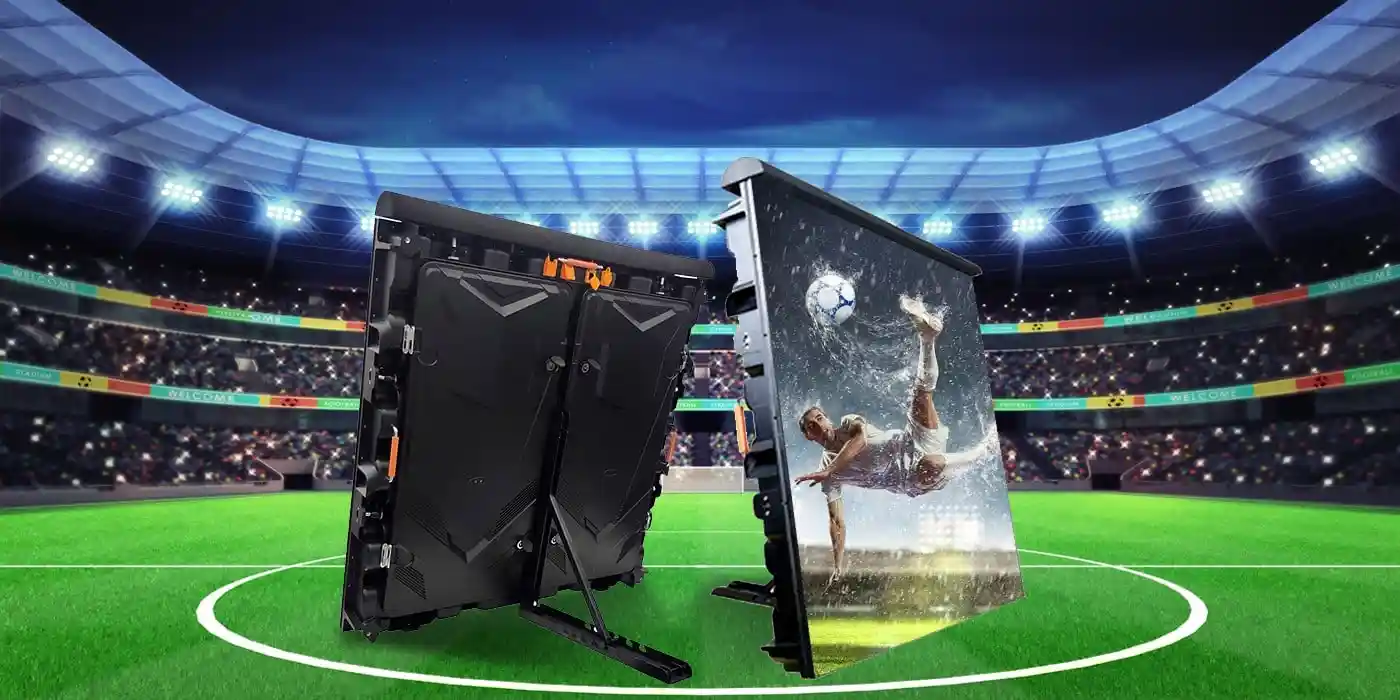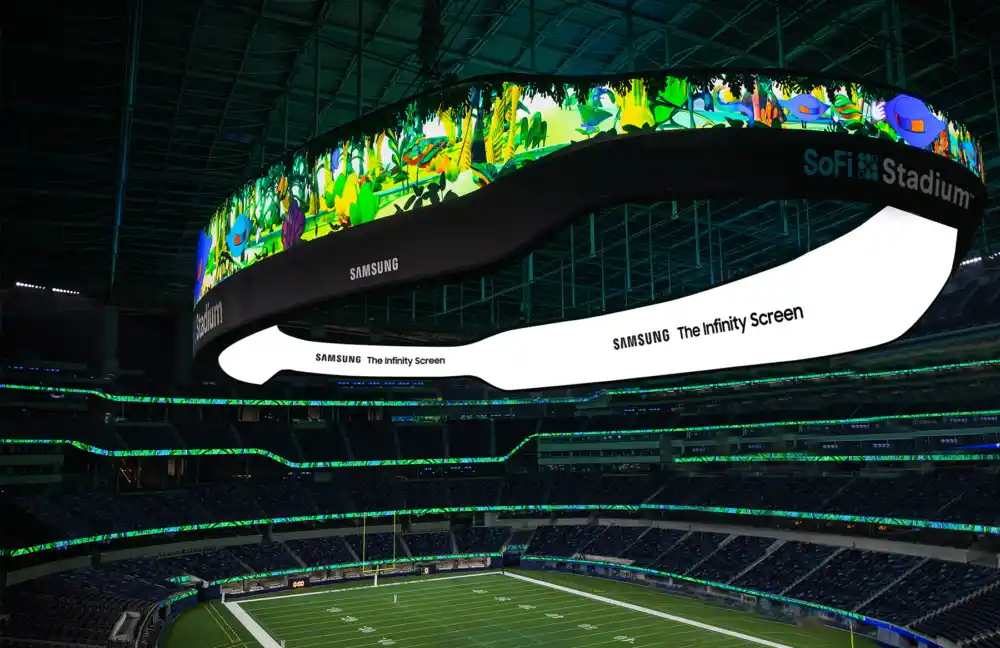Stadium LED Displays: Worth the Investment? How to Pick the Best

Step into any contemporary stadium, and you'll notice it immediately: a huge LED board illuminating the field, replays, scores, fan response, and possibly even a kiss cam experience or two. These stadium LED displays aren't mere spectacles. They're now an integral part of game day.
Are they worth their cost? And should you be considering installing one, how do you select the best type? Let's discuss it in this blog.

Why are Stadium LED Screens so in Demand?
Stadiums are not quiet places. You've got live sports, concerts, civic events, and more. That's a high number of people, a high level of activity, and a high level of attention to capture.
Here's what a stadium LED screen offers:
- Improved visibility: Forget about squinting from the nosebleeds. LED screens make everything bigger and brighter.
- Live action replays: Fans don't miss a beat, even when they blink.
- Advertising opportunities: Those big screens generate big ad revenue. Think sponsor logos, timed promotions, or even full-blown commercials.
- Instant updates: From scores to emergency messages, it keeps everyone informed.
- Fan engagement: Graphics, interactive games, and crowd cams rev up energy during breaks.
So yes, they've become the norm for many venues. But is it the right decision for you?
What makes Stadium LEDs worth your investment?
LED stadium screens are not inexpensive. But that does not necessarily mean it is a bad investment.
Let's be honest, stadium LED displays aren't cheap. A standard outdoor screen can cost anywhere from $30,000 to over $500,000, depending on size, resolution, and features. Add installation, maintenance, and power costs, and you're looking at a significant upfront spend.
But that's just one side of the story.
An LED screen in a first-class stadium usually has a lifespan of 7 to 10 years. Divided over its lifetime, the annual cost is significantly more affordable. And in the majority of instances, stadiums experience a return much earlier.
- Advertising revenue: Selling five ad spaces per event for $1,000 each on 40 events per year generates $200,000 in annual revenue. That's frequently enough to offset the entire cost within one season.
- Fan interaction: Clarity graphics, real-time statistics, and fan interactions enhance the game-day experience. That equals repeat ticket purchase and greater on-site spending.
- Multi-purpose functionality: A single screen can host a variety of events, including concerts, community functions, and more, with varying content and sponsors, all on the same screen.
For most stadiums, it's not merely about the technology. It's a revenue-generating tool, an experience-enhancing device, and one that maintains the facility competitive.
If you're considering long-term value, stadium LED display is one of the brightest upgrades you can give, particularly when done correctly and supported by a reputable supplier like Cinstar LED.
Here's what you're getting for your money:
- Long-term lifespan: A well-maintained display can last 7-10 years.
- Revenue potential: Sponsors will be more willing to pay if they are confident their message will be displayed on a large, high-definition screen.
- Fan satisfaction: Content fans tend to make repeat ticket purchases.
- Flexible application: A single screen can be utilized in multiple ways for various events.
Most stadium owners recover their investment within a few years. Some even sooner if they utilize it wisely and maintain it properly.
Also Read: LED Display Lifespan- How Long Will LED Screen Last
How Much Does a Stadium LED Display Cost?
Here's a rough estimate for a typical full-color, outdoor LED display:
| Type | Size (approx.) | Pixel Pitch | Estimated Cost Range (USD) |
|---|---|---|---|
| Small (20-40 sqm) | 6m x 3m | 10mm | $30,000 -- $80,000 |
| Medium (50-100 sqm) | 10m x 5m | 8-10mm | $80,000 -- $200,000 |
| Large (100+ sqm) | 15m x 10m or more | 6-10mm | $200,000 -- $500,000+ |
Please note that these numbers do not include installation, structural supports, or maintenance, but rather LED modules, cabinets, and control systems.
That being said, not all displays are created equal. If you're purchasing one, the secret is to buy wisely.
What to Consider When Selecting a Stadium LED Display
1. Screen size and location
Consider your venue size. A small screen in a large stadium won't have much effect. But a big screen in a small venue can be overwhelming or even distracting.
Ask yourself:
- ● Where are most fans likely to sit?
- ● How many must see it?
- ● Can the screen safely be mounted in that position?
2. Pixel Pitch
This is a whopper. Pixel pitch indicates how sharp the picture will be from a given distance.
Lower pixel pitch = sharper pictures, particularly when viewed up close.
Here's a handy quick reference:
- Below 6mm: For shorter viewing distances.
- 6-10mm: Best for general mid-range viewing.
- 10mm and larger: Best for giant stadiums where viewers are seated far from the screen.
Don't just pick the lowest number without context. Find one that fits your venue layout.
3. Weather Resistance and Brightness
Outdoor stadiums require displays that are resistant to sunlight, rain, and other unexpected weather conditions. Ensure your display.
- ● Features high levels of brightness (at least 5,000-7,000 nits for outdoor applications)
- ● Is rated IP65 or higher (i.e., it is dust-sealed and waterproof)
Indoor stadiums do not need the same degree of weather resistance, but brightness is an issue if ambient light levels are high.
4. Refresh Rate
The refresh rate influences how smooth video playback appears. This is particularly important for sports and live-action events. A good refresh rate prevents flicker and provides an enhanced experience for both on-site supporters and broadcasters.
Target: At least 3,840Hz for professional-grade quality
5. Service and Maintenance
Even top screens require care. Ensure the supplier provides:
- ● Swift parts replacement
- ● Technical support
- ● On-site service if possible
Also, verify if the modules are front- or back-serviceable. This determines how readily accessible they are for fixing.
6. Control System and Software
A great screen with terrible control software will not get much use. Find systems that:
- ● They are simple to control
- ● Can change content quickly
- ● Compatible with real-time feeds and graphics
- ● Training must be offered with the purchase
7. Reputation of the Manufacturer
Stick with companies that have a history in big LED projects. Cinstar, as an example, has worked with several stadiums and event facilities globally. Take a look at their client list, project images, and reviews.
Mistakes to Avoid
It is all too easy for technical jargon and sales rhetoric to influence your decision. Some mistakes to watch out for:
- Buying too much screen to spare: It increases costs and requires more maintenance.
- Not considering power use: Certain screens are guzzlers. Check efficiency ratings.
- Skipping warranty information: Read the fine print. Understand what's included and for how many years it's covered.
- Choosing style over function: A fancy design won't matter if fans can't read the score.
Real-Life Benefits: It's Not Just About Flash
Many stadiums have reported unexpected upsides after installing LED displays:
- ● Community groups request to use the venue for events more often.
- ● Local advertisers show renewed interest.
- ● Fans post more social media updates, making the arena more visible online.
- ● Game delays or substitutions are better managed with prompt announcements on TV.
It's not only a matter of replaying action. It's about providing a setting that makes fans come back for more.
Final Thoughts
An LED stadium display is a significant choice. It takes research, planning, and a good sense of your venue's requirements. But for most stadiums in the modern era, it's not just about the glitzy screen. It's about the venue's identity.
Take your time. Ask questions. Compare. A quality display will pay dividends for decades and keep your fans engaged in the action, wherever they sit.
And when you're prepared to explore more stable alternatives, consider what Cinstar LED can offer. With history working with custom stadium LED displays and a solid track record, we understand how to perform for venues of any size.
